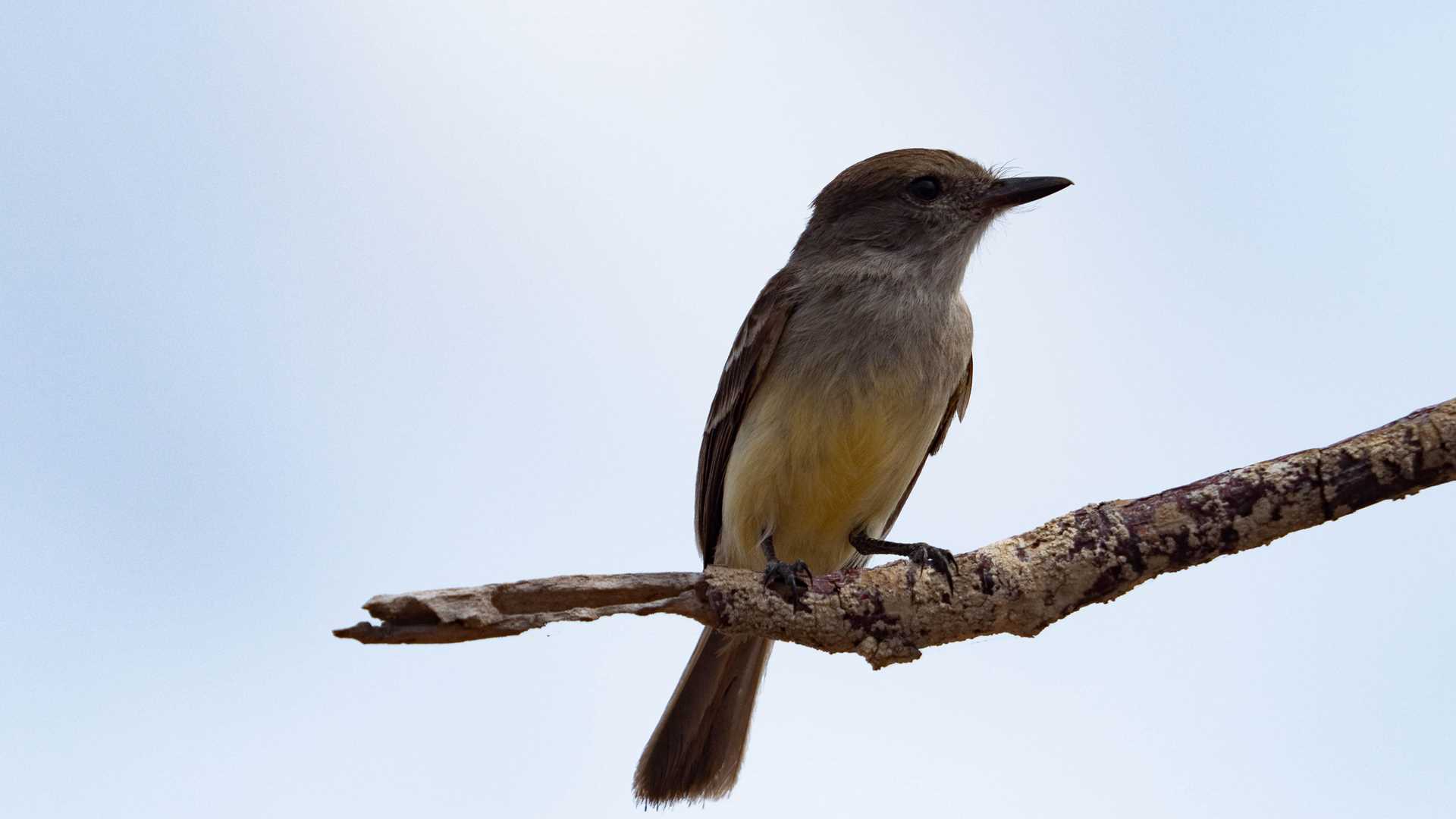Santa Cruz Island is the second largest island in the Galapagos and home to many of the archipelago's endemic and native species, including the Galapagos land iguana (Conolophus subcristatus). The iguana’s habitat is located in the northwest of the island, a site we visited today.
After breakfast, we boarded Zodiacs to head toward Dragon Hill, a name that honors the land iguanas abundant here. Walking along the beach, we found coastal vegetation and many marine iguanas warming their bodies with the first rays of the sun. In the sea, blue-footed boobies and pelicans tried to catch some fish. Walking inland, the vegetation changed radically. Palo santo trees that appeared dry and leafless were covered with lichens, giving them a grayish color. Not far from there, we observed our first land iguanas; some of them walked indifferently in the dry grass, while others remained motionless in the middle of the path, showing no fear of us. We observed some cacti, whose pads looked bitten by the iguanas. Sharp and long spines do not prevent the incredible reptiles from eating the cacti. The reptiles use their strong claws, thick skin and powerful jaws to remove the spines. The cacti feed the iguanas and quench their thirst, and the iguanas devour the succulent plans.
After visiting Dragon Hill, we returned to the ship to prepare to discover the incredible underwater world that surrounds the island of Santa Cruz. While snorkeling, we saw many tropical fish, whitetip reef sharks, stingrays, sea turtles and even a sea lion feeding on a tuna in the sea.
After lunch, National Geographic Endeavor II sailed north toward Borrero Bay. At 2:30 p.m., we started our activities in the calm waters of the island. Guests had several options to choose from: kayaking, paddleboarding or a Zodiac ride. Around the mangrove trees, we found a large number of sea turtles. We also spotted whitetip and blacktip sharks of different sizes. The sharks swam calmly in the shallow waters of the bay. Guests photographed lava herons, pelicans and some frigatebirds in the mangroves.
When we returned to the ship, we found a truly spectacular scene. Dozens of manta rays jumped everywhere. They somersaulted in the air as if trying to fly, and then landed completely horizontally on the water. This produced a loud sound due to the contact of water with the flat body of this majestic creature. We approached the rays and stood at a short distance. Without flinching, they continued with this "cleansing ritual" that works to rid their bodies of certain ectoparasites. The show lasted for a bit to the great delight of our guests, who enjoyed their seats in this magnificent theater as the scene unfolded on stage.
Just before sunset, National Geographic Endeavor II circumnavigated around Daphne Mayor Islet. Our guests had the opportunity to taste different wines while observing the countless seabirds that flew over the ship and the spectacular crater in the middle of the ocean. It was an excellent end to a great day in this natural paradise called Galapagos.







